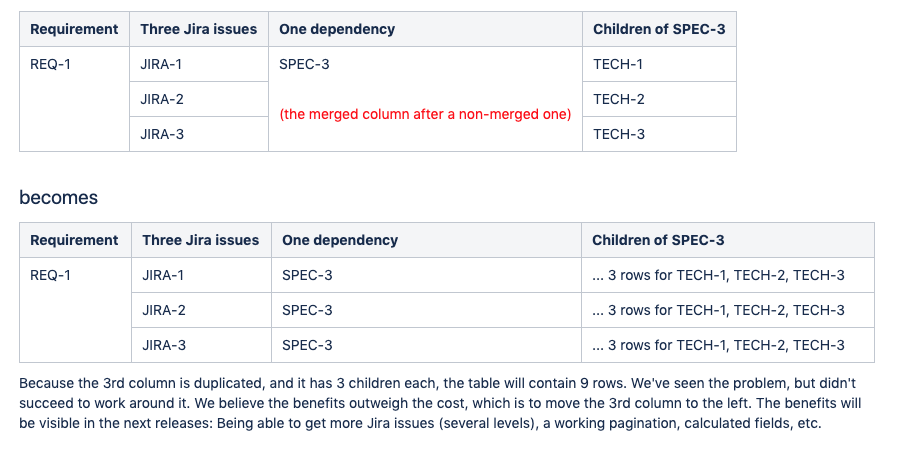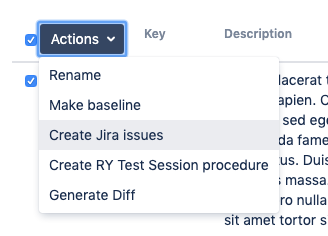In this release
Create Jira issues from requirements. Also, we have a new traceability matrix.
Important
In this release, we have changed the implementation of the traceability matrix. There is a major change of behavior which should impact very little people, very annoyingly:
-
Cells aren't merged anymore after a non-merged column.
This happens if a field that is common on several rows appears on the right of a field which is different on several rows. In this situation, the cells aren't merged, so their children are repeated. The solution is to move this column to the left. Example:

Create Jira issues from requirements
Remember the Sprint planning meetings? This new feature lets you select requirements, then group them into Stories and create them in Jira.
→ More information on the page Jira bulk issue creation.

Changes to the traceability matrix
This release will contain many improvements to the traceability matrix. For the moment, we've entirely changed the implementation to make it more flexible. It brings us:
-
We retrieve the Jira status correctly, if it is requested,
-
The pagination is now correct. The old pagination only relied on top-level items and thus failed if a top-level row was divided into many child cells. The new pagination is capable of paginating inside of merged cells.
The expected features in subsequent releases will certainly be:
-
The ability to retrieve Jira issues' fields in the traceability matrix,
-
The ability to display linked Jira issues recursively,
-
Xray's custom fields in our traceability matrix.
For the moment, there is one drawback: Merged cells at the top levels are ok, but if a row is divided, then the following column also has a row that is divided. We didn't find a way around this, it is a result of the new implementation.
|
Version |
Feature |
|---|---|
|
2.3.0 |
Pagination |
|
2.3.2 |
Jira fields:
Xray fields:
Other traceability features:
|
